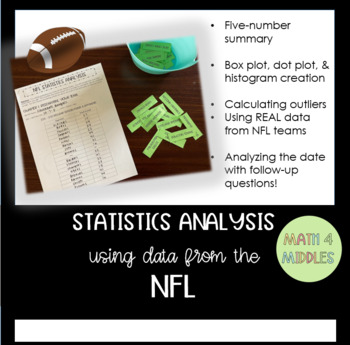One Variable Statistics Review: Analyzing NFL Scores
- PDF
What educators are saying
Description
**UPDATED for the 2022-2023 season!**
Students are ALWAYS asking "when will I ever see/use this in my life?" This activity provides an opportunity for students to analyze an NFL team's scores from the 2022-2023 regular season. It provides a more engaging way for student to review one-variable statistics and reflect on what they find out about their team.
4 quarters of work included + an "overtime":
- Quarter 1: Researching your team (record hunting)
- Quarter 2: Stats analysis (five-number summary, mean, IQR, MAD, standard deviation)
- Quarter 3: Scores that don't make sense (outliers calculation)
- Quarter 4: Representing your team (creating dot plot, box plot, and/or histogram with the data found)
- Overtime: Analyzing your team data questions
You may also like:
One-Variable Statistics: Stations Review
Terms of Use:
This product should only be used by the teacher who purchased it. This product is not to be shared with other teachers. Please buy the correct number of licenses if this is to be used by more than one teacher.
Did you know?
You can receive TPT store credits to use on future purchases by leaving feedback on products you buy! Just click on "My Purchases" under "Buy"!
Connect with me!


